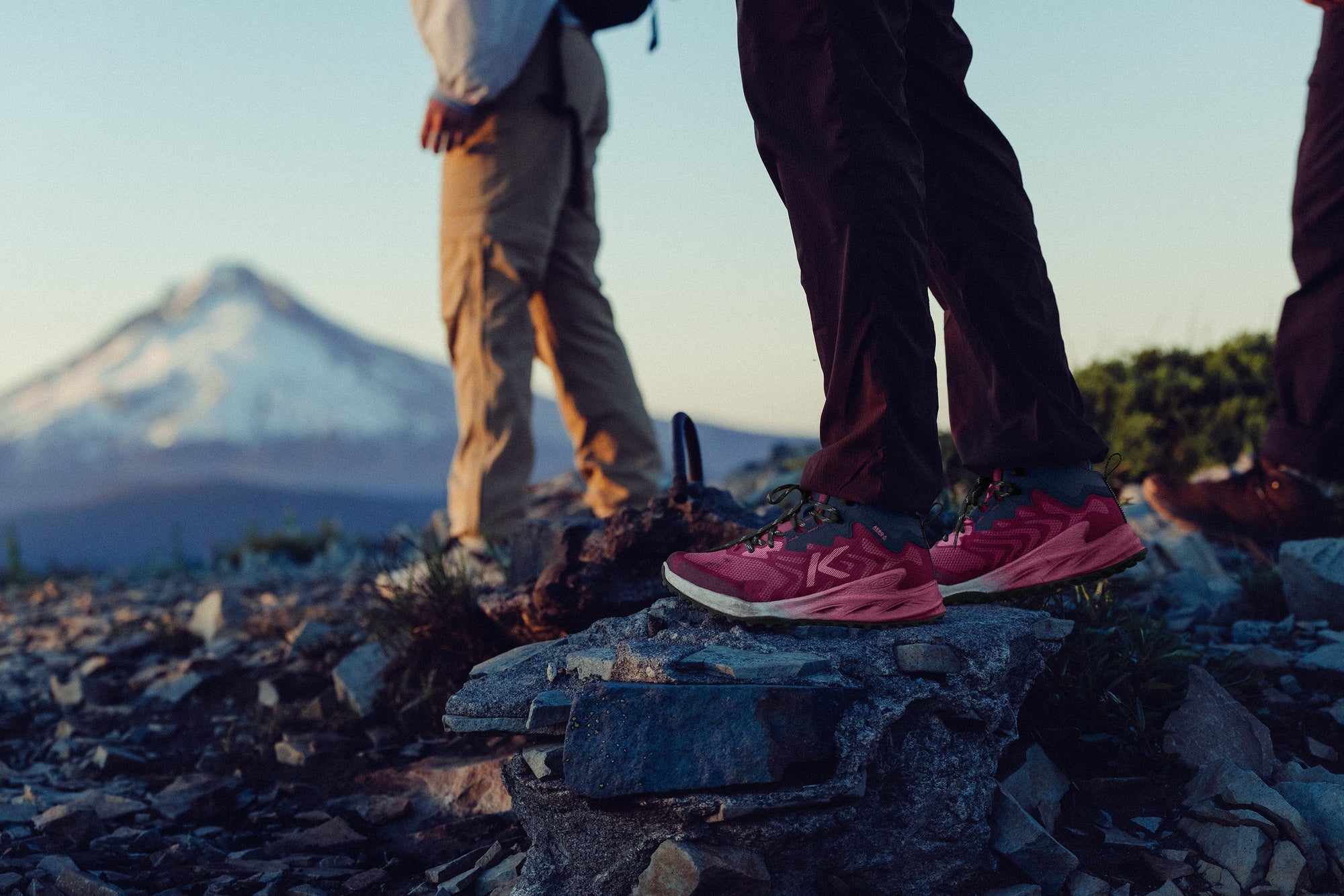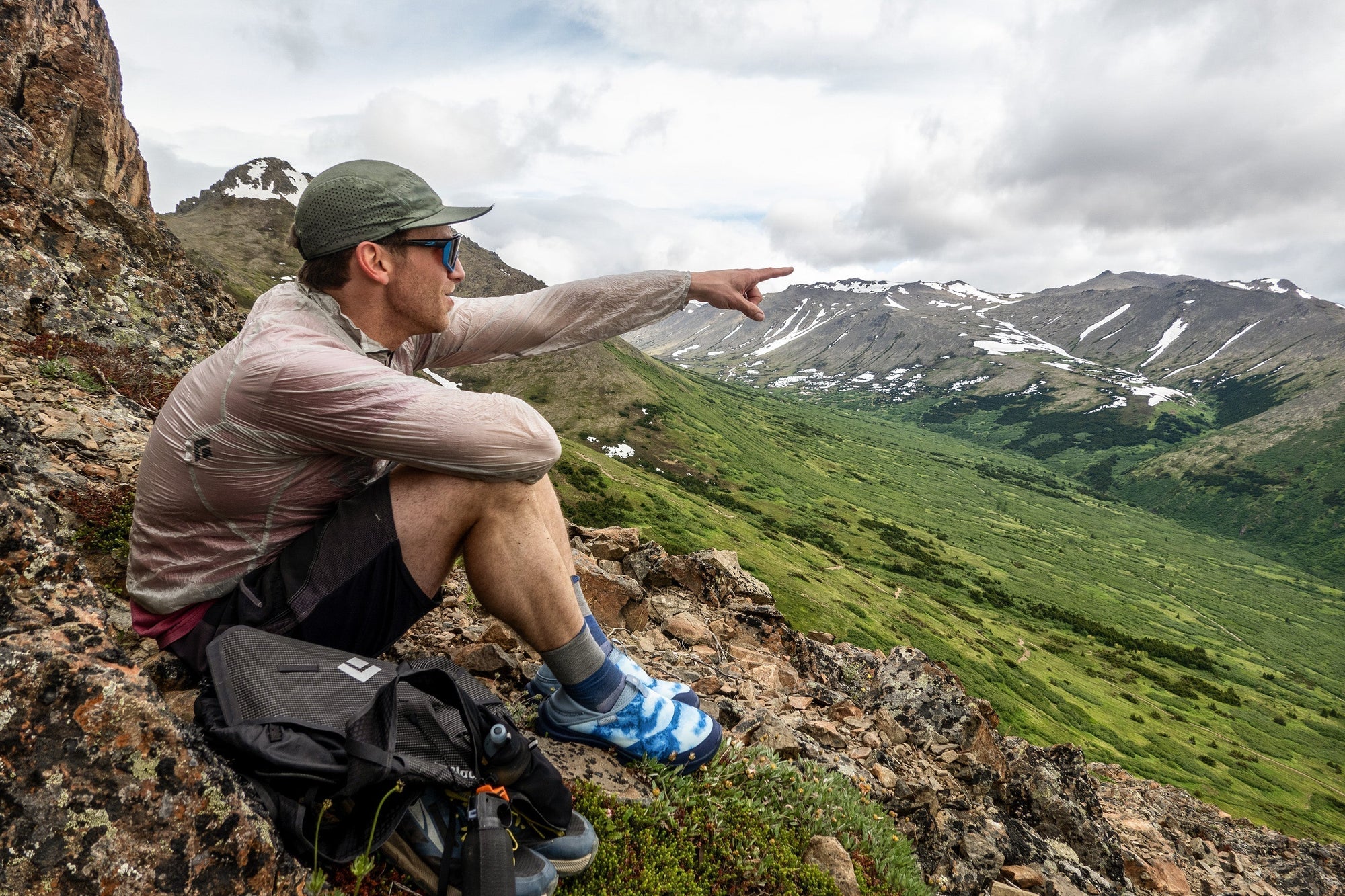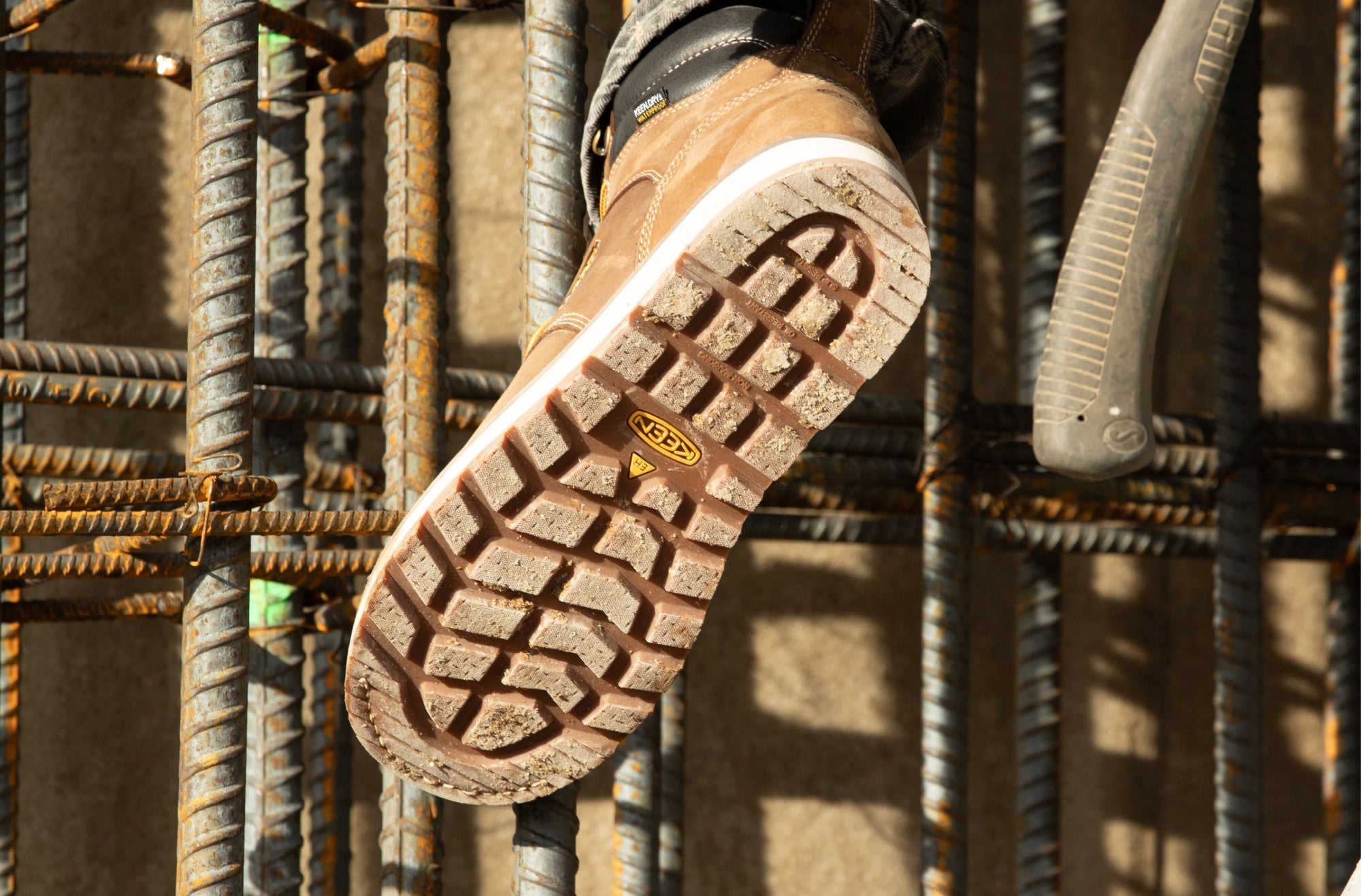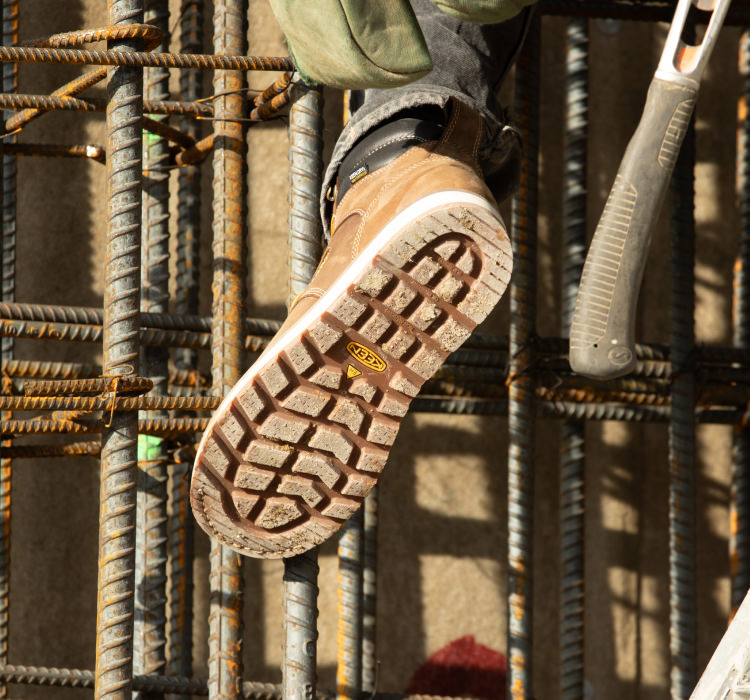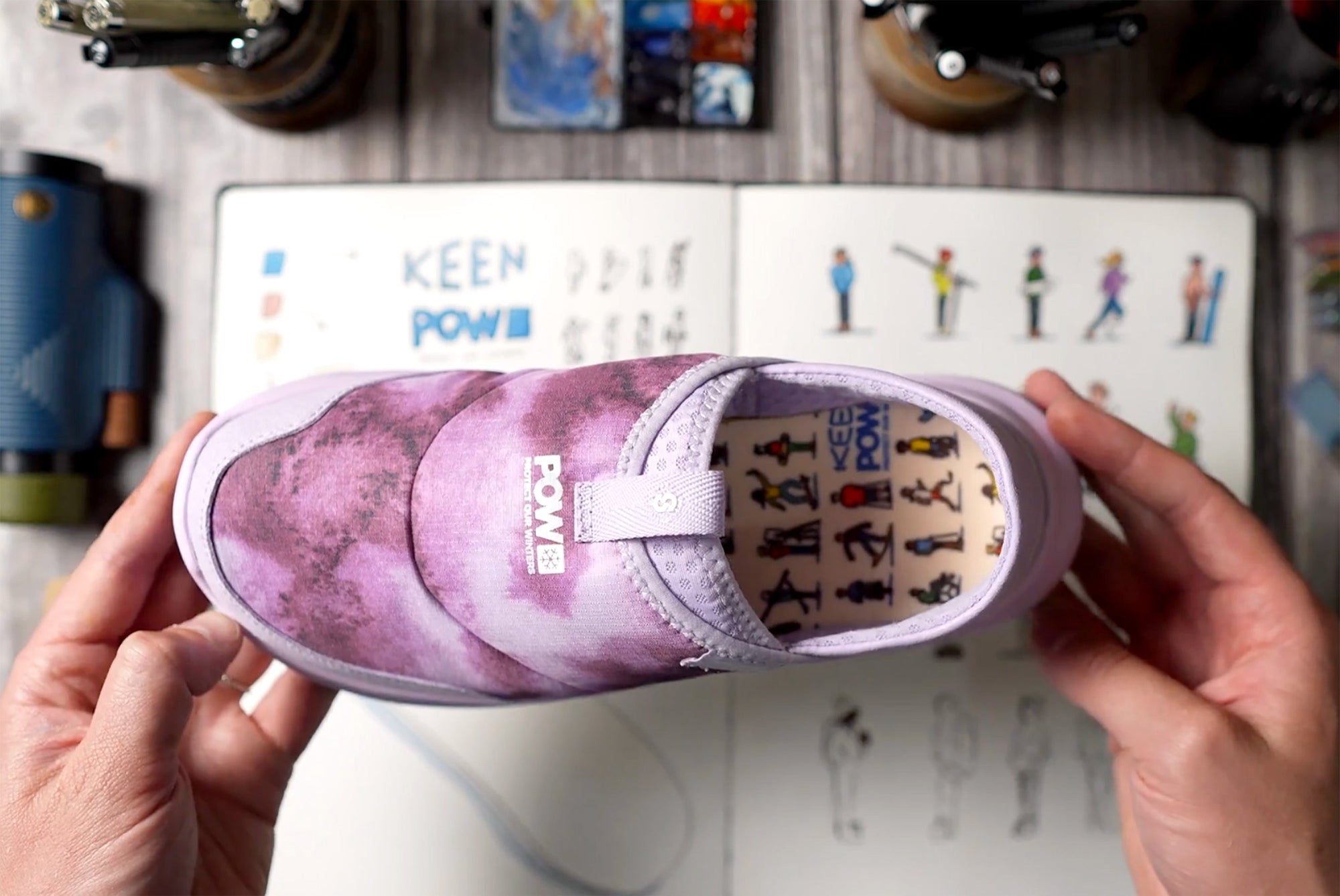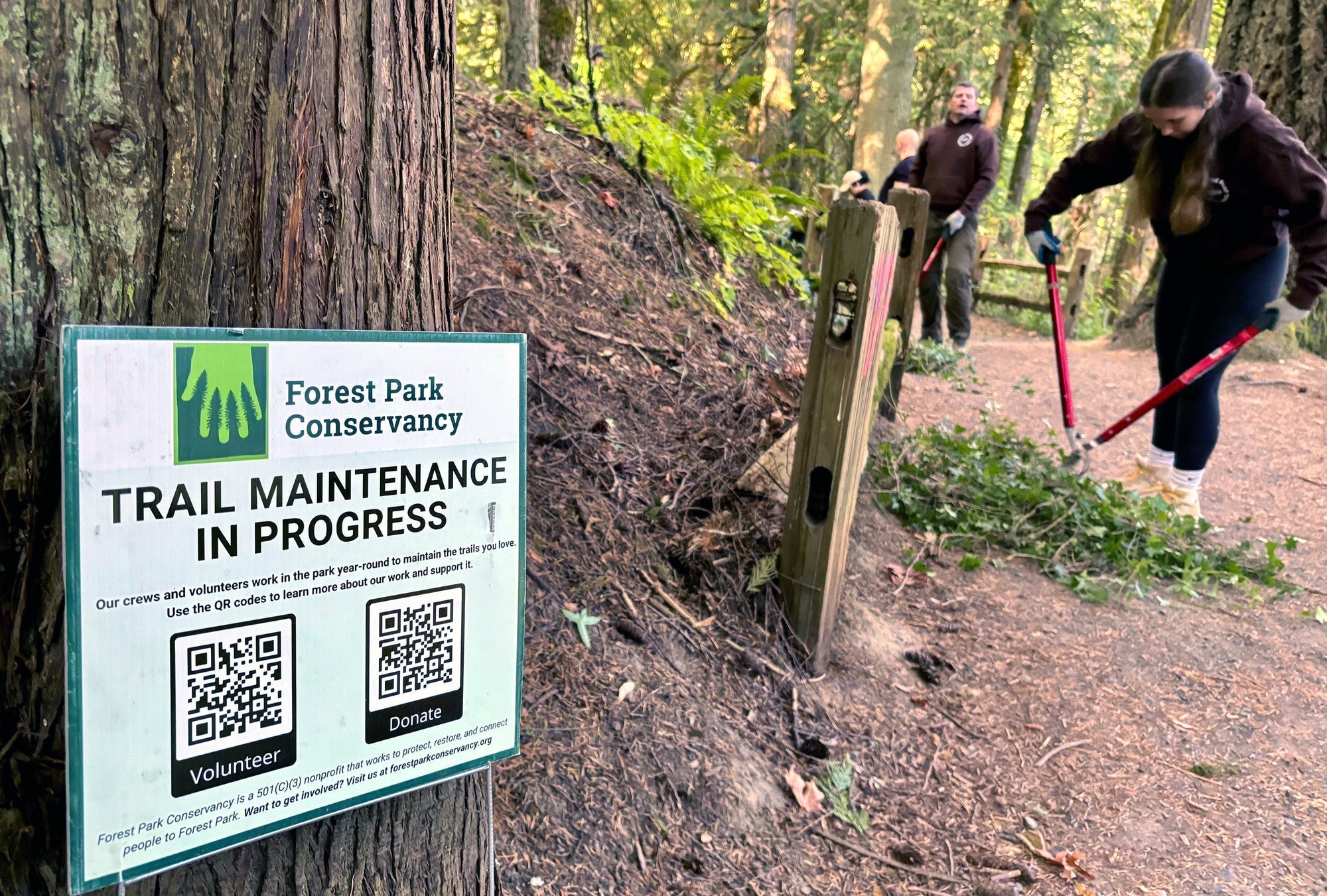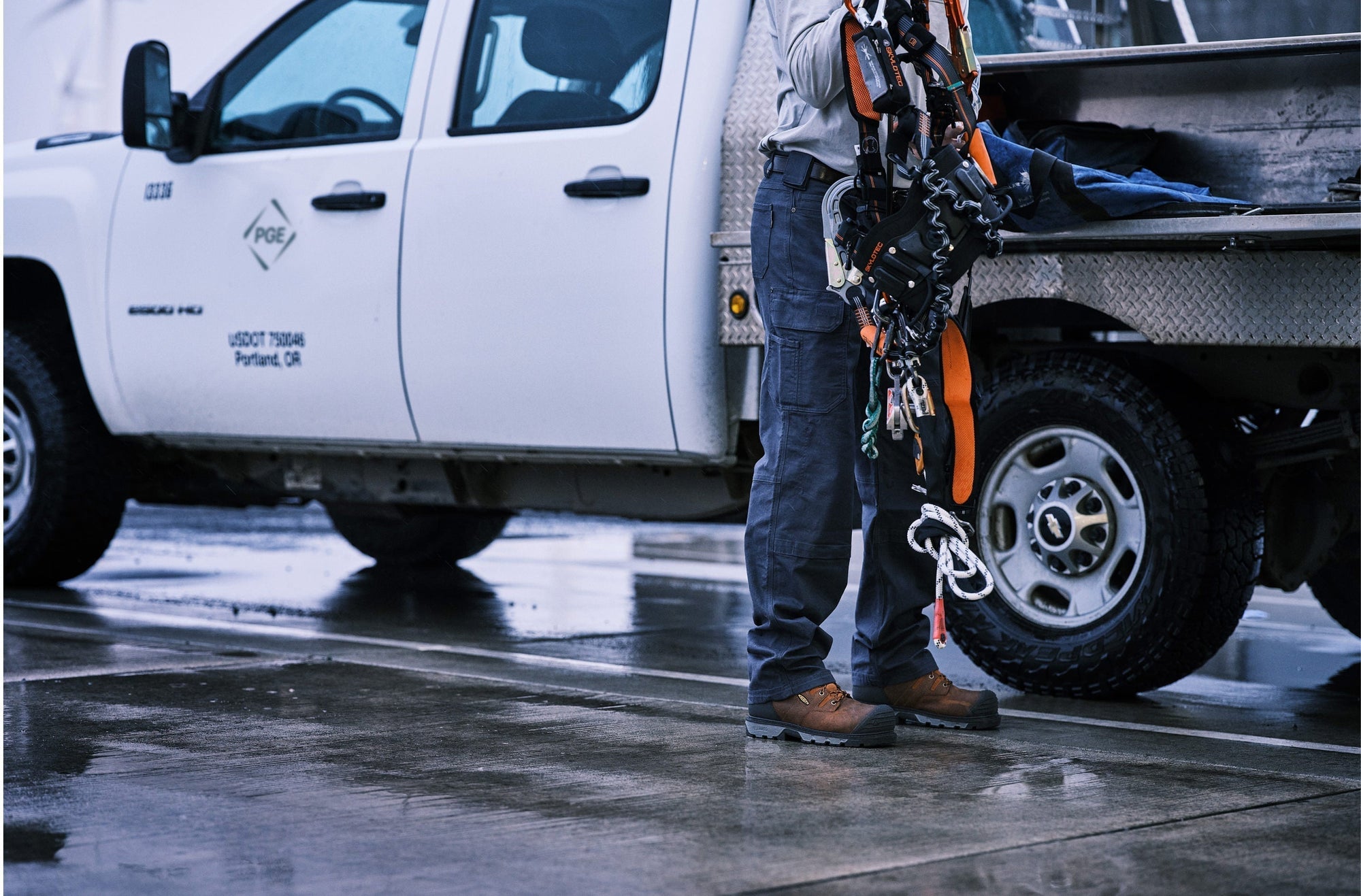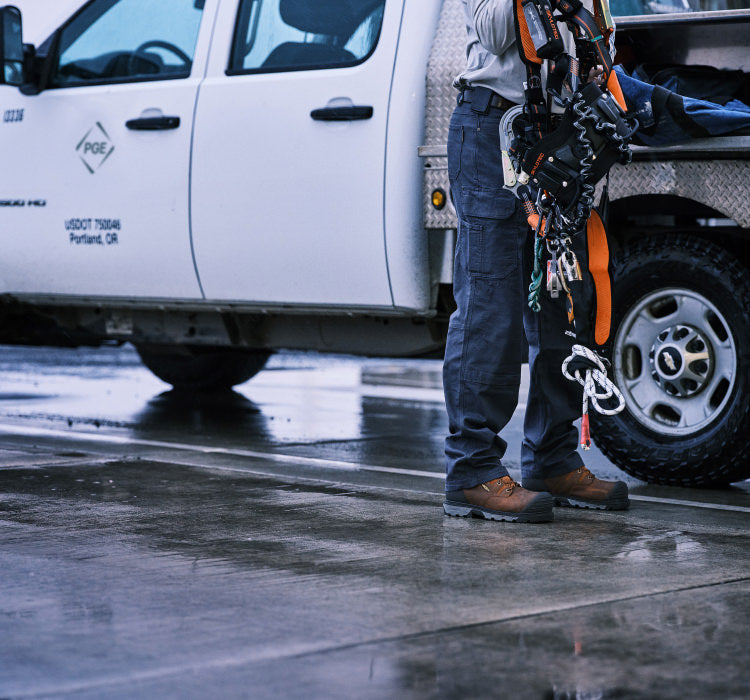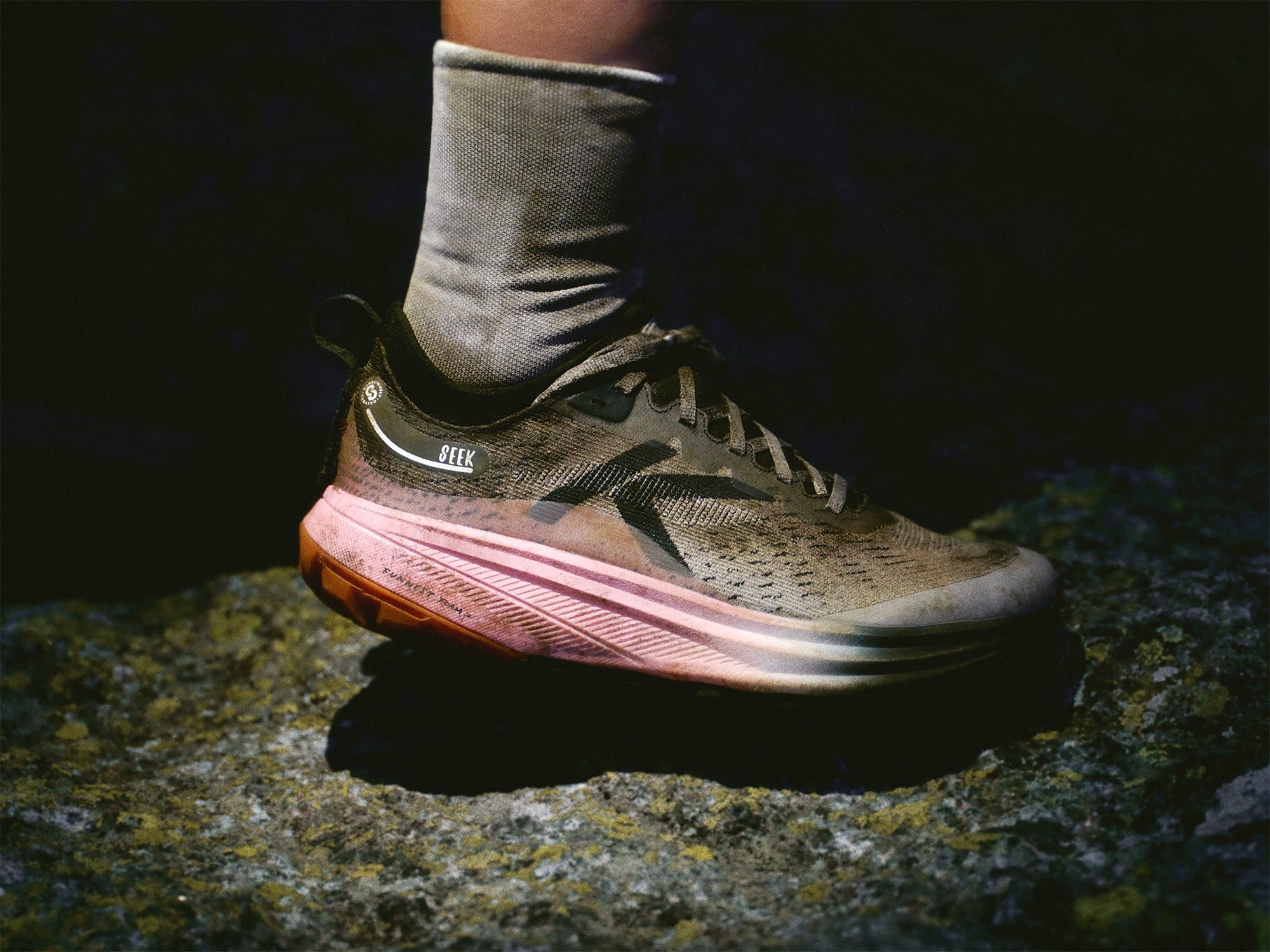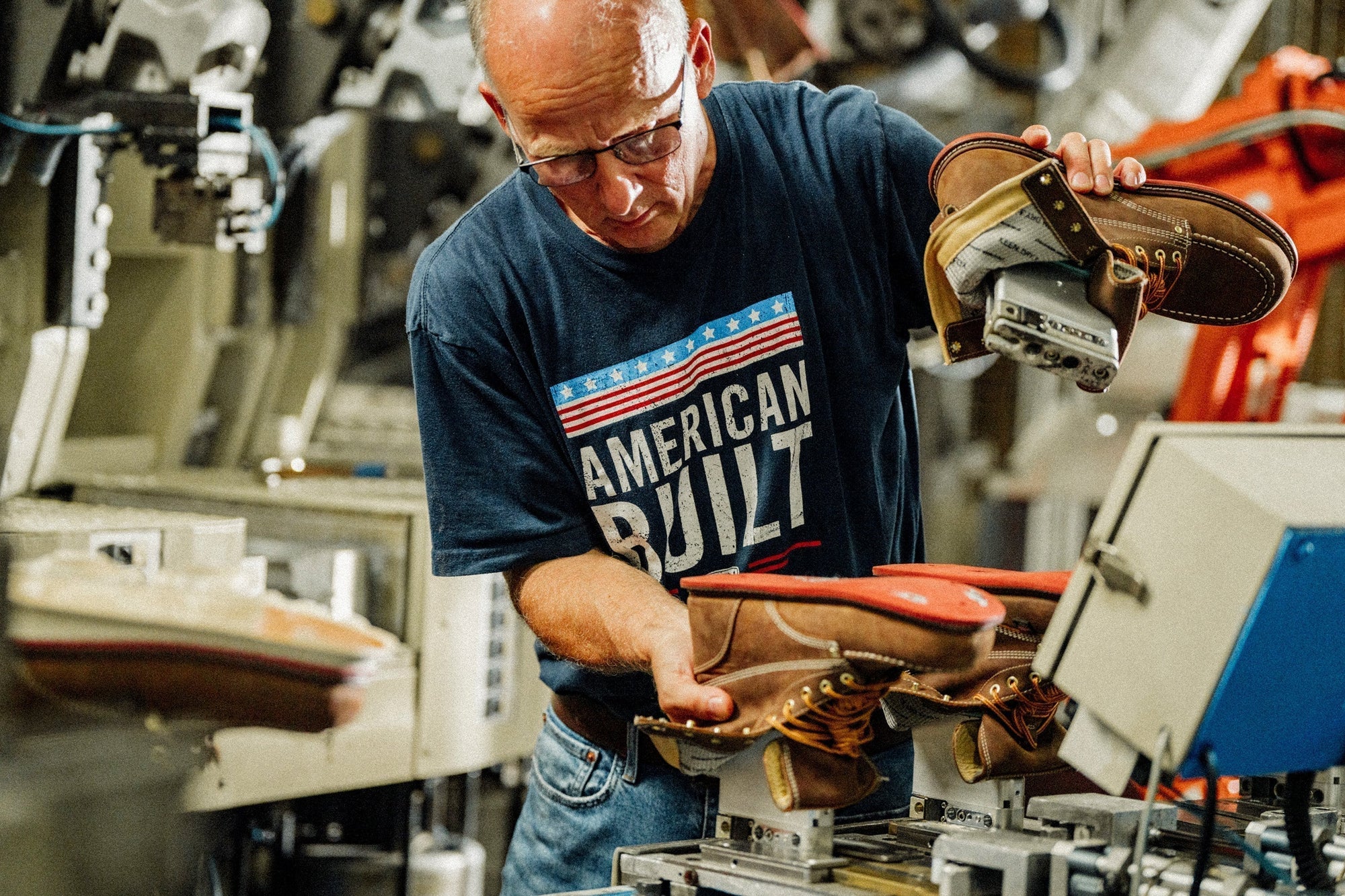When you’re shopping for work boots, you’ll notice a near-bewildering number of options. There are lace-up styles and slip-on wellingtons, low-cut work sneakers and mid-height boots. You might even see that a few of these work boots have distinct, visible stitching binding the upper to the midsole and outsole. Boots made with this stitching, called a Goodyear welt, are some of the longest lasting you can buy … but, why?
This method of adhering the boot upper to the outsole is a tried-and-true construction technique that dates back to the 1800s. Goodyear welt construction is well known for creating extremely durable boots that you can depend on for the toughest jobs. Read on to find out which KEEN Utility work boots it’s incorporated into.
How Are KEEN Utility Work Boots Built?
Before digging into the specifics of welt construction, it’s important to understand the key parts of a work boot.

-
Outsole: The bottom of the boot that contacts the ground. It’s often made of rubber with different compounds and tread patterns designed for specific types of work and terrain.

-
Midsole: The layer of boot that is sandwiched between the insole and the outsole, which provides cushioning and support. Our welted boots come with our KEEN Luftcell midsole, which is infused with nearly 100,000 air bubbles per cubic centimeter for long-lasting comfort.
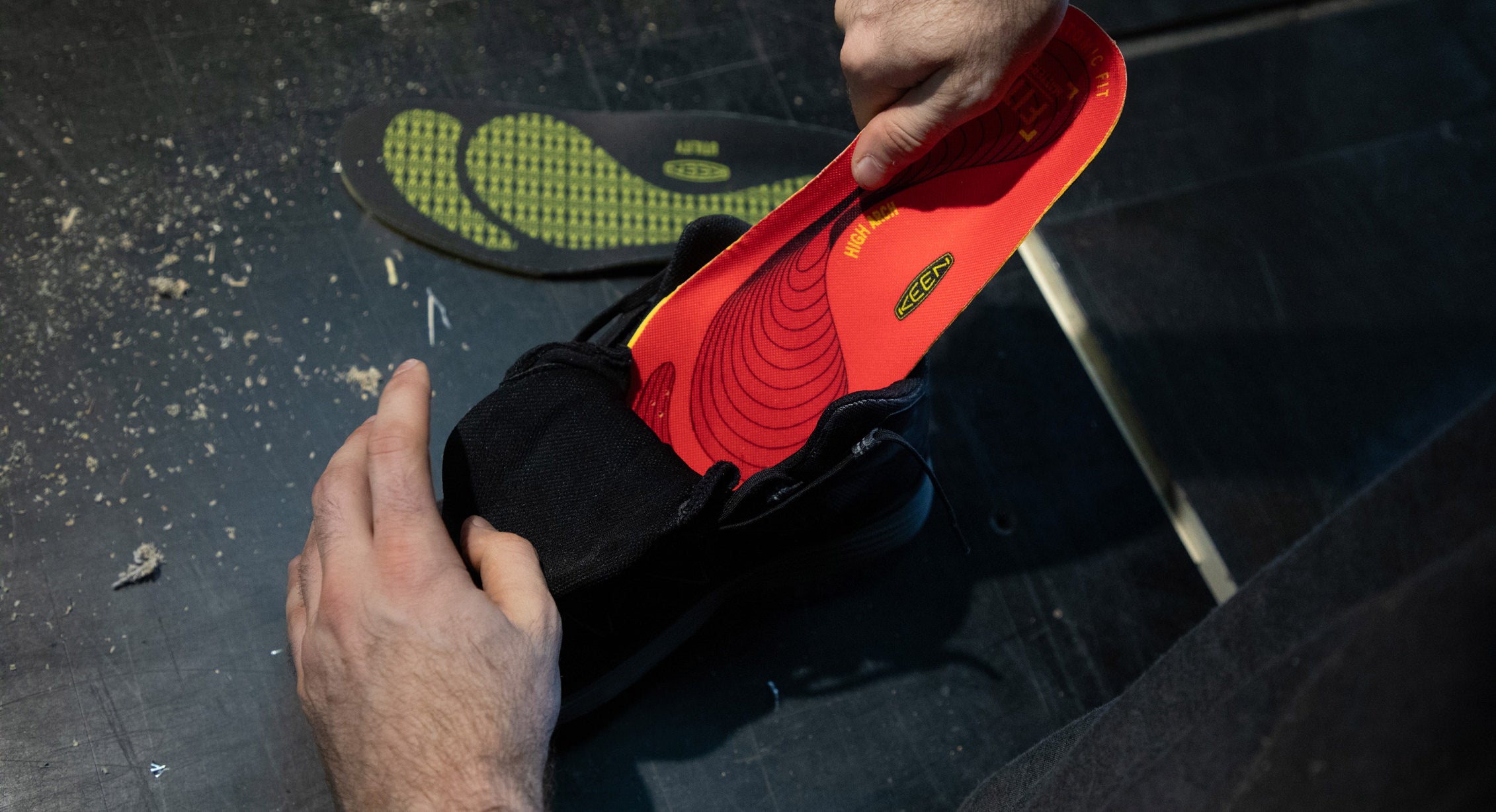
-
Insole: The inside part of the boot that supports the bottom of the foot. KEEN Utility insoles are designed with built-in arch support, plus feature technology for natural odor control. They’re also removable, so it's easy to swap them for orthotics or pull them out to help wet boots dry faster.
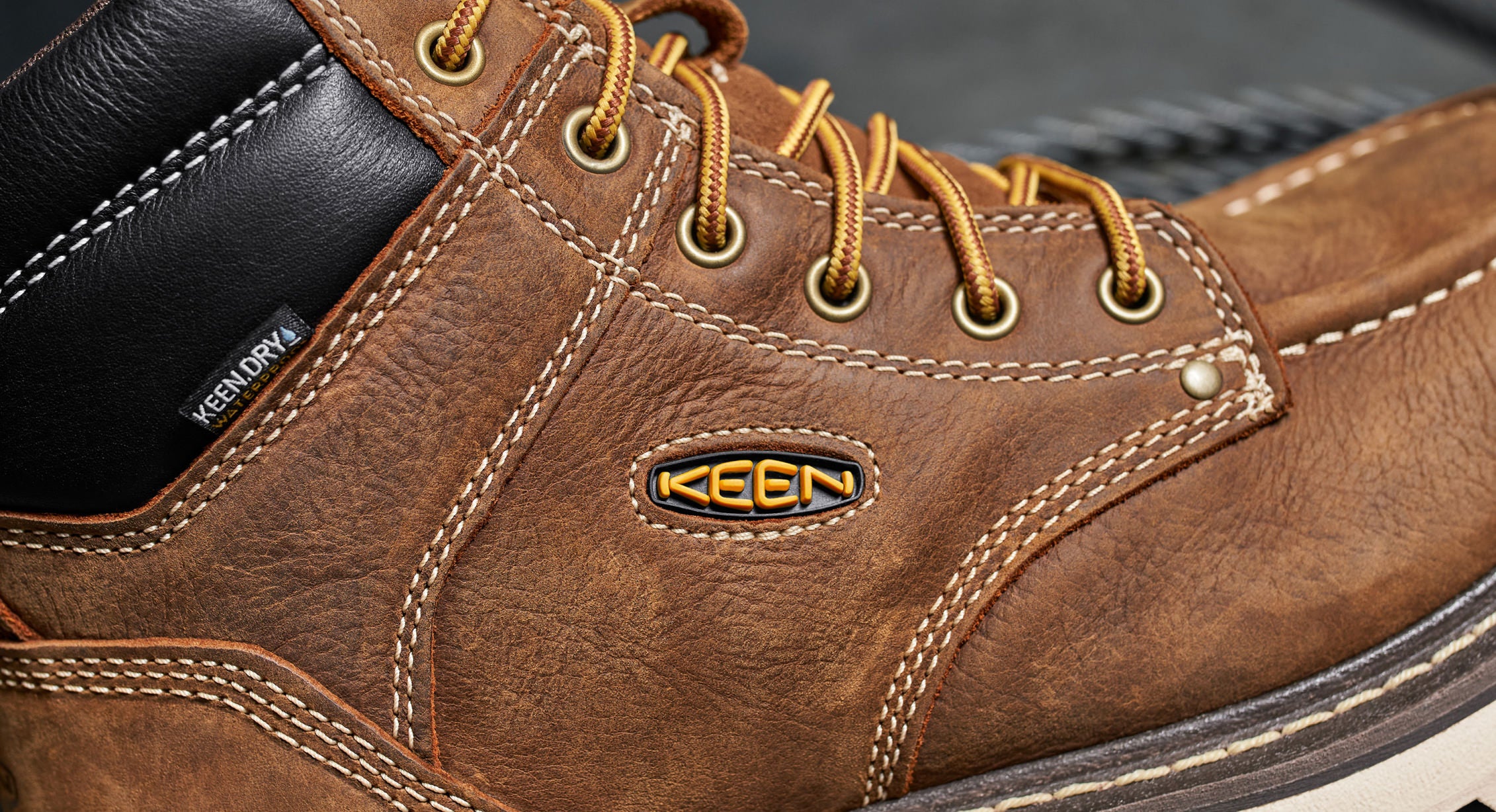
-
Upper: The part of the boot on top of the sole that covers the foot. Here at KEEN Utility, we craft uppers from rugged materials like premium leather, synthetic leather, and durable engineered mesh or textile.
In order to create lasting footwear, there are a few common ways to assemble all of these parts together. We use three trusted methods to create KEEN Utility footwear:
- KEEN.FUSION: Bonds the upper and the outsole with heat + pressure
- Cement construction: Uses glue or epoxy to adhere the upper to the outsole
- Goodyear welt construction: Stitches the upper, midsole, and outsole together with thread
With Goodyear welt construction, an additional piece of leather, rubber, or plastic (called a welt) must be added to the boot in order to secure the stitching. This thin strip of material is first glued and stitched to the perimeter of the boot’s upper. Next, the midsole and outsole are added, and another set of stitching attaches the sole of the shoe to the welt. A tell-tale sign of a welt construction is if you can see stitching on both the top and the bottom of the boot.
History of the Goodyear Welt
Back in the day, welted footwear was stitched entirely by hand. It wasn't until 1875 that Charles Goodyear Jr. — son of Charles Goodyear, creator of vulcanized rubber— patented a stitching machine that improved the durability and production of welted boots. What was once called welt construction took on the name of the new machine and became Goodyear welt construction. Since hand-stitching took a lot of time, the Goodyear machine increased efficiency. Before too long, Goodyear welt construction caught on worldwide as a sign of quality.

Key Benefits of Goodyear Welt Construction
Hard-working men and women choose boots with Goodyear welt construction for lots of reasons. What makes them so trusted in tough work conditions?
• Durability: Welted boots hold up year after year because they’re constructed using both adhesive and stitching. Additionally, they tend to be made using only high-quality leather since leather needs to hold up to stitching without breaking or weakening along the seams.
• Water-resistance: Due to the unique way the welt is tightly stitched to the upper and outsole, welted boots are highly water-resistant since there aren’t any seams on the inside of the boot that allow water to seep in. This means they’re great at keeping out potentially toxic liquids too.
• Stability: The addition of a welt adds extra stability, which means welted boots provide a secure, locked-in feel as you work.
• Longevity: Compared to other construction types, the Goodyear welt allows for the easy replacement of a well-used, worn-out sole. Local cobblers can replace a sole multiple times, adding years or even decades to the lifespan of a welted boot.

Our Favorite Welted Work Boots
Built with a classic Goodyear welted sole, the women’s and men’s Cincinnati boot is as durable as it gets. Full-grain Barnyard Resistant Leather combines with a lightweight KEEN Luftcell air-infused midsole and oil- and slip-resistant rubber outsole to create an extremely durable boot that feels solid and supportive throughout the day. Many of our Cincinnati boot styles are available with a KEEN.DRY waterproof, breathable membrane for added protection in wet weather.

Made for hard work where extra stability is a must, the men’s Camden boot comes equipped with a 360° Goodyear welt construction that maximizes durability. Designed with extreme working conditions in mind, the Camden boot is built with a KEEN.DRY waterproof, breathable membrane and air-infused KEEN Luftcell midsole. As an added bonus, our team here at KEEN Utility analyzed this boot’s design and removed as much unnecessary weight as they could — meaning it can take any abuse you put it through without feeling like a cinder block on your foot.









